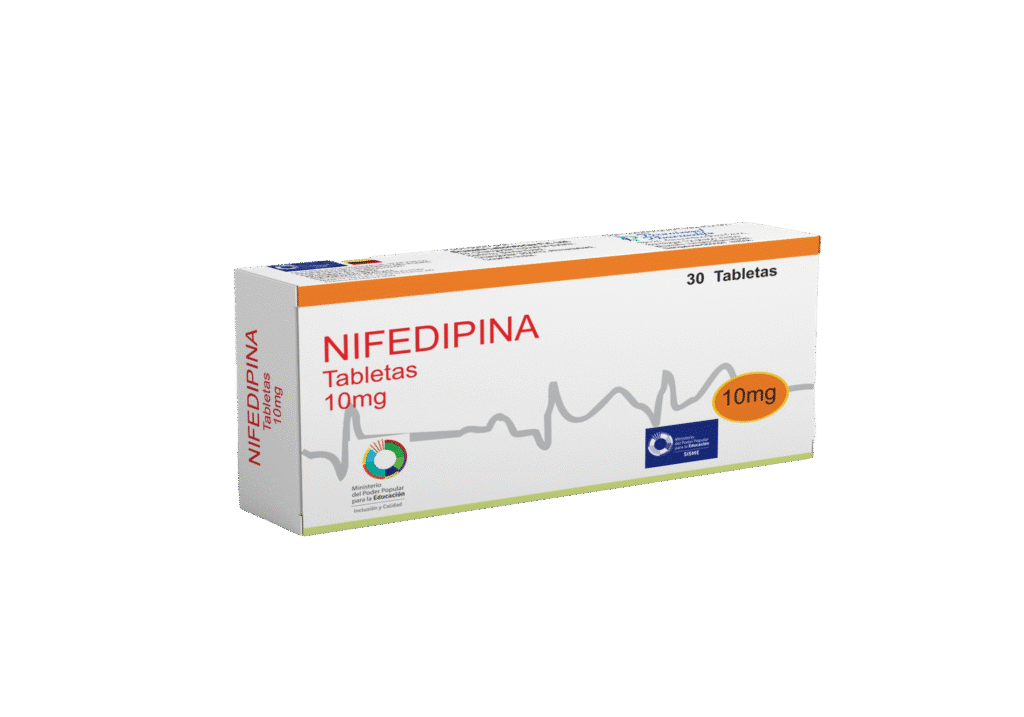







Nifedipine is a powerful calcium channel blocker from the 1,4-dihydropyridine class. It works by relaxing blood vessels and improving blood flow, especially to the heart.
Nifedipine 10 mg Tablet Precautions You Should Know
General Safety
Heart Health
Blood Pressure Monitoring
Pregnancy & Breastfeeding
Diabetes
Liver Function
Drug Interactions
Nifedipine is broken down by an enzyme called CYP3A4. Some drugs can affect how nifedipine works by increasing its levels in your body. These include:
| Type of Drug | Examples |
| Antibiotics | Erythromycin |
| Antifungals | Ketoconazole, Itraconazole, Fluconazole |
| HIV Medicines | Ritonavir, Indinavir, Nelfinavir, Saquinavir |
| Antidepressants | Fluoxetine, Nefazodone |
| Others | Valproic acid, cimetidine, and Quinupristin/Dalfopristin |
If you’re taking any of these, your blood pressure should be monitored, and your nifedipine dose may need to be lowered.
How to Take a Nifedipine 10 mg Tablet?
Tailored Treatment
For Heart Conditions
Chronic Stable Angina (Chest Pain from Effort)
For High Blood Pressure (Hypertension)
How to Take It
Special Populations
| Group | Recommendation |
|---|---|
| Children (<18) | Not recommended—safety not established |
| Elderly (>65) | May need lower doses—body processes drug more slowly |
| Liver problems | Dose may need to be reduced and monitored closely |
| Kidney problems | No dose change needed |
Duration of Use
What are the side effects of the Nifedipine 10 mg tablet?
Frequency Categories
Nervous System
Heart & Blood Vessels
Blood & Immune System
Mental Health
Eyes
Muscles & Joints
Digestive System
Liver
Skin
Kidneys & Urinary
Reproductive System
General Symptoms
Special Warnings
Store below 30°C.
Keep out of reach of children.
3×10 Alu/PVC Blister
Nifedipine Tablet 10 mg is available in an Alu/PVC blister of 10 tablets. Such 3 blisters in a unit carton with a package insert.
Contact us directly to receive full information on the product, the formulation, the science behind it, stability data, and more. Our Business Development Manager is a click away.
Questions are useful tools, they open lines of communication; give us information; improve interactions, facilitate analysis, and many more.
A pharma CMO is a special kind of an organization, offering contract manufacturing services to pharmaceutical companies for various kinds of drug formulations.
Reduce overall costs and time to market :
Contract manufacturers already have the needed infrastructure and technical staff, so working with a CMO or CDMO can decrease the cost of manufacturing your pharmaceutical products.
Scalability and flexible production capacity :
You can produce what you need when you need it without worrying about excess capacity. Additionally, CMOs understand the importance of quality and compliance, so you don't have to sacrifice safety for scalability.
Save on upgrading and maintaining equipment :
If you have your manufacturing facility, you’ll have to pay to upgrade your equipment as technology advances—which can get expensive. A CMO/CDMO’s only function is to make and distribute products, so part of their core business responsibility is to update their equipment whenever needed and perform maintenance.
Ease supply chain issues :
During the pandemic, there were several instances of supply chain issues, including medicine shortages. CMOs are generally better equipped than startups to handle a supply chain crisis.
Bandwidth to focus on core competencies
When your company resources aren’t directly allocated to manufacturing and distribution, you have more time to focus on other tasks, like marketing your new drug, researching, or working on drug discovery.
We have 7+ manufacturing sites with a minimum of WHO GMP certification and other country-specific approvals like NAFDAC approved, PPK Kenya Approved, TFDA Tanzania Approved, EU-GMP Approved.
We have below manufacturing capacity:
For Tablet, Capsule, and soft gel: up to 1 million units per shift
For Syrup: up to 0.05 Million per shift
For Ampoule and Vial: up to 0.1 million units per shift
For Ointment and Cream: up to 0.1 million units per shift
For Suppository: 0.1 Million units per shift
